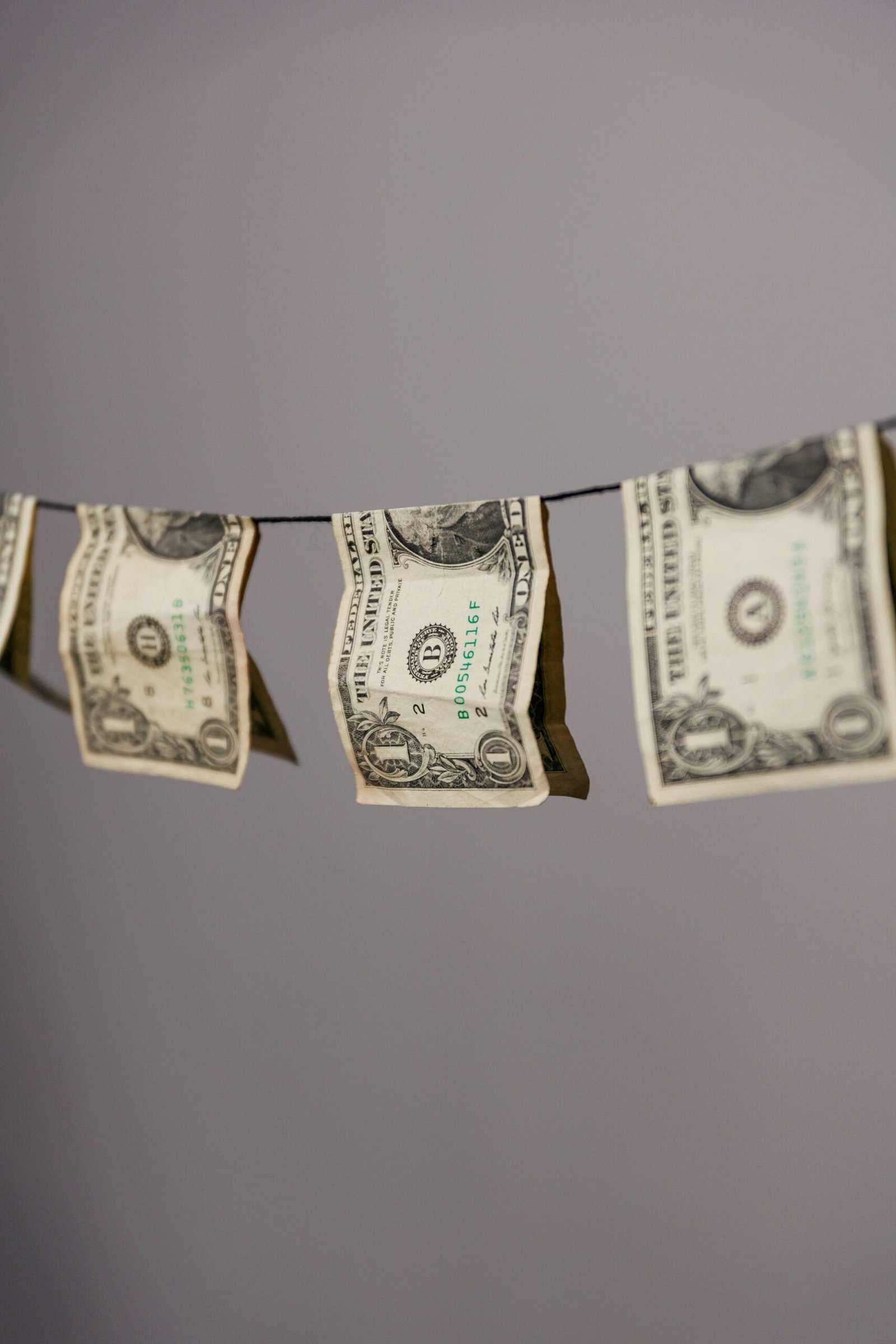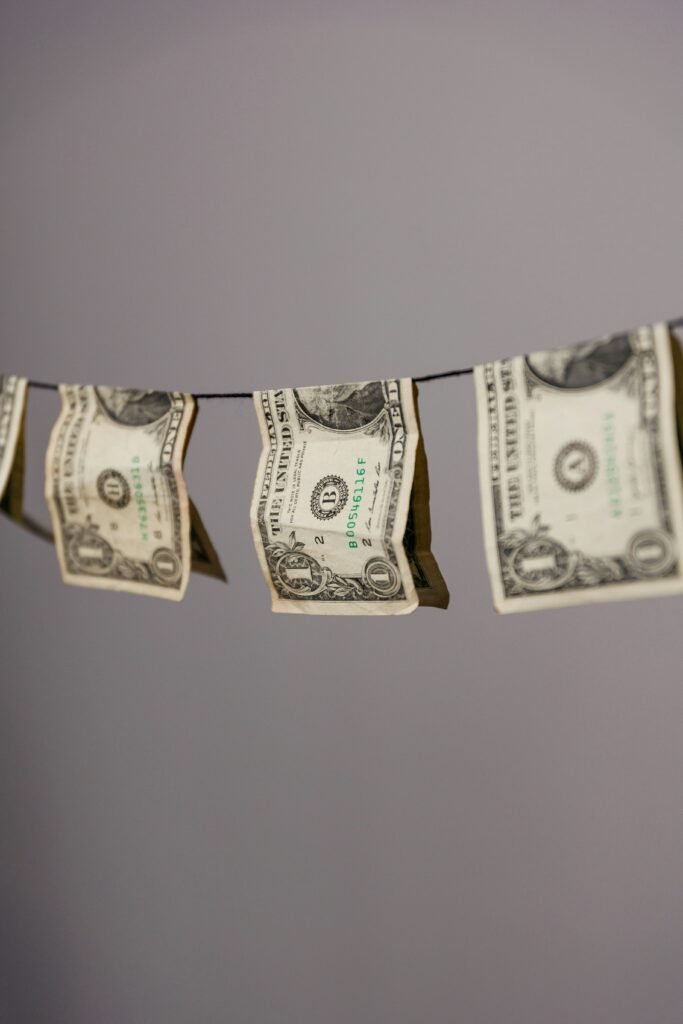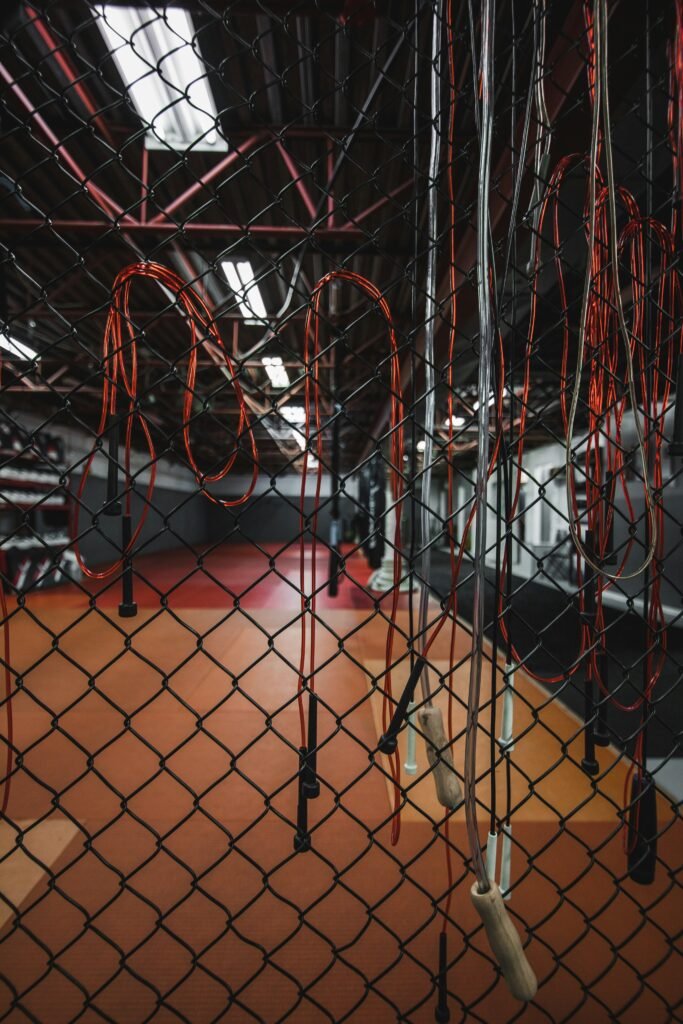Business & Money
How Your Kitchen Became the Hottest Restaurant in Town
In 2024, the culinary landscape has undergone a dramatic transformation. The once-thriving restaurant industry is now grappling with widespread closures, pushing more people to embrace home cooking. This shift is not just a response to economic pressures but also a reflection of evolving consumer habits and preferences. Let’s explore the current trends, statistics, and underlying factors that have made home kitchens the new culinary hotspots.
The Great Restaurant Exodus
The restaurant industry, which was already reeling from the impacts of the COVID-19 pandemic, has seen a significant number of closures in recent years. Major chains like Red Lobster, Applebee’s, TGI Fridays, and Denny’s have shuttered numerous locations, with some reducing their presence drastically. For instance, Boston Market has downsized from around 300 restaurants to just 27 by early 2024.
- Factors contributing to these closures include:
- The rising cost of goods, which has increased by up to 30% in some cases, has made it difficult for restaurants to maintain profitability.
- Higher wages and labor shortages have added to the financial strain.
- Economic pressures have led consumers to cut back on dining out.
The Rise of Home Cooking
As restaurants close their doors, more people are turning to their kitchens for meals. This shift is driven by several factors:
1. With inflation affecting food prices, cooking at home has become a more economical option for many families.
2. The lingering effects of the pandemic have made some people wary of dining out, preferring the control and safety of home-cooked meals.
3. The rise of food blogs, cooking shows, and social media has inspired many to experiment with new recipes and cooking techniques at home.
Trends Shaping Home Cooking
Several trends are influencing the home cooking movement:
1. Consumers are seeking easy-to-make recipes that fit into their busy lifestyles. Meal kits and grocery delivery services have seen a surge in popularity as they offer convenience without compromising on quality.
2. There is a growing emphasis on healthy eating, with more people opting for organic ingredients, plant-based diets, and home-grown produce.
3. Smart kitchen appliances and cooking gadgets are making home cooking more accessible and enjoyable. From air fryers to smart ovens, technology is transforming how we prepare meals.
Statistics Highlighting the Shift
- Surveys indicate that a significant percentage of people are cooking more at home compared to pre-pandemic times. This trend is expected to continue as economic uncertainties persist.
- There has been a notable increase in grocery sales, reflecting the shift towards home-cooked meals. According to recent reports, grocery sales have risen by over 10% in the past year.
- The meal kit market is booming, with companies like HelloFresh and Blue Apron reporting substantial growth. The convenience and variety offered by meal kits appeal to a wide range of consumers.
The Future of Dining
While the restaurant industry faces challenges, the shift towards home cooking presents opportunities for innovation and growth. Here are some potential developments:
1. Some restaurants are adapting by offering meal kits and cooking classes, allowing customers to recreate their favorite dishes at home.
2. Local farmers’ markets and community-supported agriculture (CSA) programs are gaining popularity as people seek fresh, locally-sourced ingredients.
3. There is a growing focus on sustainability, with more consumers prioritizing eco-friendly practices in their cooking and shopping habits.
The transformation of home kitchens into the hottest restaurants in town is a testament to the resilience and adaptability of consumers. As economic pressures and health concerns drive more people to cook at home, the culinary landscape is evolving in exciting ways. Whether it’s through the adoption of new technologies, the exploration of diverse cuisines, or the pursuit of healthier eating habits, the trend of home cooking is here to stay.
Stay Connected
Unlock impactful advertising opportunities with Bolanle Media. Our expert team crafts immersive experiences that captivate audiences, driving brand engagement and memorability. Let’s elevate your brand’s marketing strategy together.
Business
Overqualified? Great, Now Prove You’ll Work for Free and Love It!

The phrase “Overqualified? Great, Now Prove You’ll Work for Free and Love It!” sums up the snake-eating-its-tail absurdity of the modern job search. In 2025, the most experienced, credentialed candidates are told they’re not quite the right fit—because they’re too capable, too seasoned, and might actually threaten the status quo by knowing what they’re worth.

The Experience Dilemma
Picture this: half the workforce has too much education or experience for the entry-level roles on offer, and yet, employers still claim they can’t find “qualified” people. The result? An absurd interview dance where applicants with years of achievement must convince employers they’re perfectly fine being underpaid and unappreciated. Many are even asked to perform hours of free “sample work”—projects that benefit the company but are never compensated.
Nearly half of job seekers have applied for jobs for which they were overqualified this year, and about a quarter feel “overqualification” is a major obstacle to actually getting hired. Employers call it “hiring for culture fit” or “salary alignment.” Candidates call it gaslighting: “We love your credentials, but wouldn’t someone like you get bored… or want a living wage?”.
Free Labor: The New Normal
The job hunt is now a marathon of unpaid labor. Applicants often rewrite resumes dozens of times (to game robotic filters), complete personality tests, and spend weeks in multi-stage interviews, only to be ghosted. In a perverse twist, talented workers jump through hoops for jobs explicitly beneath their skill level, all because employers believe an overqualified hire will “leave at the first better opportunity.” In reality, people just want to pay the bills—and would gladly contribute their value if someone gave them a chance.

Even as companies bemoan a “labor shortage,” they turn away the best and brightest, fearing they’ll disrupt the hierarchy, demand raises, or burn out from boredom. What’s left? The less skilled get trained on the job, and even they are told not to expect too much—after all, wouldn’t you do it for the “experience” alone?.
The Absurdity of the Market
Workers at every level—laid off, mid-career, executives—are hunting desperately for positions once reserved for recent graduates. Administrative jobs that previously required a high school diploma now routinely demand a college degree and relevant work history. Degree inflation means the bar keeps rising, but the pay and job security aren’t budging; 2025’s job search feels more like a dystopian obstacle course than a professional meritocracy.
Employers wield the “overqualified” label to maintain the illusion that they could hire anyone, while making sure they never have to pay what a role is really worth. Ironically, most companies spend more time filtering out talent than developing it—and everyone loses in the end.

What’s the Solution?
Job seekers are increasingly advised to do the following:
- Tailor resumes and cover letters to each application, emphasizing culture fit and signaling “no threat to the boss”.
- Network with insiders for referrals, since faceless applications are now nearly pointless.
- Accept that unpaid proof-of-skills work is now part of the game.
- Keep learning, but remember: adding skills may just make you even more overqualified for the next round.
The paradox of 2025? “Show us your value—just don’t expect to be treated like you have any.” The only thing more overqualified than today’s job seeker is the job market itself: packed with hurdles, full of empty promises, and rigged to keep the most talented quietly waiting for a call that may never come.
Business & Money
How the GENIUS Act Will Transform Your Money and Payments

The passage of the GENIUS Act in 2025 marks a revolutionary step in how money and payments will work in the United States. It is the first comprehensive federal law specifically regulating stablecoins—digital currencies pegged to traditional money like the U.S. dollar. This new legislation is poised to reshape your experience with money, making payments faster, more transparent, and potentially cheaper, while introducing clear consumer protections and regulatory standards for digital currencies.

What is the GENIUS Act?
The GENIUS Act stands for Guiding and Establishing National Innovation for U.S. Stablecoins. It establishes a clear legal framework for stablecoins, which are designed to hold a steady value (usually $1) unlike the more volatile cryptocurrencies such as Bitcoin. Stablecoins are increasingly used for routine transactions such as paying bills, sending remittances, or transferring money across borders.
Under the new law:
- Only authorized issuers like banks, credit unions, and federally approved non-bank financial institutions can issue stablecoins.
- Issuers must maintain 100% reserves—meaning for every digital coin issued, there must be a corresponding $1 held in cash, U.S. Treasury securities, or other approved liquid assets.
- Issuers are required to undergo regular audits and publish disclosures about their reserves.
- If an issuer fails or goes bankrupt, holders of stablecoins get priority in getting their money back ahead of other creditors.
This stringent reserve and audit requirement provides much-needed transparency and trust for consumers.
Key Consumer Benefits and Protections
- Faster, Cheaper Payments
Integrating stablecoins into mainstream banking systems can speed up transactions dramatically. You could receive paychecks instantly, send money overseas with minimal fees, and settle payments without the delays typical of current banking transfers. - Clear Regulation and Oversight
Before the GENIUS Act, the regulatory environment was fragmented and uncertain. Now, stablecoins have a federal framework that coordinates oversight between federal and state regulators to prevent fraud, money laundering, and abuses. - Privacy and Government Limits
The law bans the Federal Reserve from creating retail Central Bank Digital Currencies (CBDCs)—digital dollars controlled directly by the government—addressing privacy concerns about surveillance of everyday spending. - Financial Stability and Consumer Priority
The Act gives stablecoin holders priority status in bankruptcy cases, meaning your digital dollars are protected better than traditional bank deposits or bondholder claims in insolvencies.

What This Means for You
The GENIUS Act could significantly change your daily financial life:
- You may start to see stablecoins integrated within banking apps, payroll systems, and payment services.
- Money transfers could become almost instantaneous and cost less, especially across borders.
- More businesses and financial institutions might accept digital dollars pegged to the U.S. dollar.
- Consumer protections could increase, with more audit oversight and clarity about your rights as a stablecoin holder.
However, challenges remain. Regulators have up to 18 months to finalize detailed rules on audits, reserve management, fraud prevention, and compliance. The evolving regulations will determine how safe and seamless digital currency payments become.
A Global Race to Modernize Money
While the U.S. passed the GENIUS Act to catch up, other countries like China and members of the European Union are already piloting their own digital currencies. The legislation positions the U.S. to retain the dollar’s dominant role globally by tying digital currencies directly to U.S. dollars and Treasury securities, potentially boosting demand for American debt and keeping borrowing costs stable.
The Future of Money and Payments
The GENIUS Act opens the door to a more modern, efficient financial system where digital dollars coexist with traditional money, offering consumers faster options and better protections. While adoption will take time, this law lays the groundwork for a future where your payments, savings, and everyday money management are fundamentally transformed by technology—making financial services more accessible, transparent, and resilient.

Whether you choose to use stablecoins actively or not, the changes unfolding will reach into many aspects of how money moves in our economy. Staying informed about this evolving landscape will help you navigate the future of payments confidently.
Business
Paramount Seals $7.7B Deal for Exclusive UFC Streaming Rights

Paramount Global has secured the exclusive U.S. rights to the Ultimate Fighting Championship (UFC) in a groundbreaking deal worth $7.7 billion over seven years, beginning in 2026. This agreement marks a major shift in UFC’s distribution, moving away from the traditional pay-per-view model currently offered by ESPN to a new streaming-focused strategy centered on Paramount’s platform, Paramount+. All 43 annual UFC live events, including 13 major numbered events and 30 Fight Nights, will be available exclusively on Paramount+ at no additional cost to subscribers, with select marquee events also simulcast on the CBS broadcast network.

The deal comes just days after Paramount completed its merger with Skydance Media and represents the company’s first major sports rights acquisition under its new leadership. Paramount CEO David Ellison emphasized the uniqueness of partnering exclusively with a global sports powerhouse like UFC, highlighting the move as a key part of Paramount’s strategy to enhance viewer engagement and grow its streaming subscriber base.
For UFC, the deal ends the pay-per-view model common in the sport, greatly increasing accessibility for fans and potentially expanding the sport’s U.S. audience. The contract also doubles the yearly average payment compared to the $550 million ESPN currently pays, reflecting the growing value and popularity of UFC content.
TKO Group Holdings, UFC’s parent company, sees this agreement as a milestone in their decade-long growth, with TKO’s CEO Ari Emanuel affirming trust in Paramount’s vision to leverage technology to improve storytelling and the viewing experience.
This landmark deal reflects the rapidly evolving sports media landscape, with streaming services increasingly vying for premium content to attract and retain subscribers. Paramount’s move to bring UFC to its platform exclusively is a strong statement of commitment to live sports as a vital driver of engagement in the streaming age.
Key Points:
- Paramount secured UFC U.S. media rights for $7.7 billion over 7 years, starting 2026.
- UFC events will be exclusively streamed on Paramount+, ending ESPN’s pay-per-view model.
- The deal includes 13 major numbered events and 30 Fight Nights annually.
- Some marquee events will also air on CBS broadcast TV.
- The yearly payment doubles ESPN’s previous contract.
- The deal was announced shortly after Paramount’s merger with Skydance.
- Paramount aims to use UFC to boost Paramount+ subscriber growth and engagement.
- TKO Group (UFC parent company) supports the deal and foresees enhanced tech-enabled storytelling.
- Streaming services continue to disrupt traditional sports broadcasting models.

 Entertainment4 weeks ago
Entertainment4 weeks agoAriana & Cynthia Say They’re in a ‘Non‑Demi Curious, Semi‑Binary’ Relationship… WTF Does That Even Mean?

 News4 weeks ago
News4 weeks agoMexico Bans Dophin Shows Nationwide

 Entertainment4 weeks ago
Entertainment4 weeks agoColombia’s ‘Doll’ Arrest: Police Say a 23-Year-Old Orchestrated Hits, Including Her Ex’s Murder

 Entertainment4 weeks ago
Entertainment4 weeks agoHow The Grinch Became The Richest Christmas Movie Ever

 Entertainment4 weeks ago
Entertainment4 weeks agoMiley Cyrus Is Engaged to Maxx Morando

 News4 weeks ago
News4 weeks agoUS May Completely Cut Income Tax Due to Tariff Revenue

 Business3 weeks ago
Business3 weeks agoLuana Lopes Lara: How a 29‑Year‑Old Became the Youngest Self‑Made Woman Billionaire

 Film Industry2 weeks ago
Film Industry2 weeks agoDisney Brings Beloved Characters to ChatGPT After $1 Billion OpenAI Deal



































